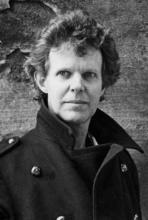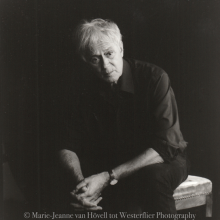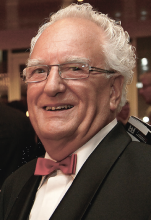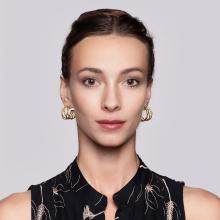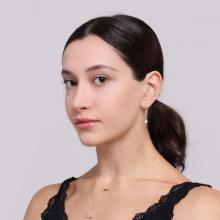Romeo and Juliet
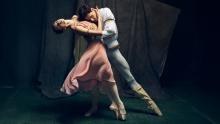
Credits
Voorstellingsinformatie
Credits
Romeo and Juliet
World premiere with Dutch National Ballet
16 February 1967, Stadsschouwburg, Amsterdam
Premiere revised version
14 February 1991, Het Muziektheater, Amsterdam
Choreography
Rudi van Dantzig
Music
Sergej Prokofjev – Romeo and Juliet (1938)
Set and costume design
Toer van Schayk
Lighting design
Jan Hofstra, revised by Bert Dalhuijsen and Wijnand van der Horst
Ballet masters
Guillaume Graffin
Caroline Sayo Iura
Michele Jimenez
Sandrine Leroy
Larisa Lezhnina
Judy Maelor Thomas
Sonja Marchiolli
Jozef Varga
Fencing instructor
Youval Kuipers
Rehearsal pianists
Elena Kim
Ryoko Kondo
Clément Rataud
Viktoriya Ryapolova
Minjung Seo
In collaboration with
Pupils and students of the Dutch National Ballet Academy (Amsterdam University of the Arts) and Studio NBA
Staging and supervision pupils Dutch National Ballet Academy
Megan Zimny Kaftira
Staging and supervision pupils Studio NBA
Marieke van der Heijden
Sylvia Krenz
Karen Schoonheim
Emma Kern
Karen Gallegos Covarrubias
Musical accompaniment
Dutch Ballet Orchestra
Conductor
Koen Kessels
Stagecraft, sets, props, wigs and makeup, and lighting
Technical Department of Dutch National Opera & Ballet
Production manager
Anu Viheriäranta
Stage managers
Wolfgang Tietze
Kees Prince
Production supervisor
Sieger Kotterer
Senior carpenter
Trinus Hertroijs
Lighting manager
Ianthe van der Hoek
Lighting supervisor
Wijnand van der Horst
Followspotters
Panos Mitsopoulos
Arjen Mulder
Carola Robert
Anton Shirkin
Marleen van Veen
Coördinator followspotters
Ariane Kamminga
Sound engineer
Raymond Roggekamp
Props manager
Jurgen van Tiggelen
Costume supervisor
Eddie Grundy
First dresser
Andrei Brejs
First make-up artist
Carlijn Spee
Introductions
Lin van Ellinckhuijsen
Swantje Schäuble
Hanke Sjamsoedin
Total duration
circa three hours, including two intervals
Dutch Ballet Orchestra
First violin
Sarah Oates, concertmaster
Kotaro Ishikawa
Suzanne Huynen
Robert Cekov
Jan Eelco Prins
Tinta Schmidt von Altenstad
Majda Varga-Beijer
Michiel Commandeur
Casper Donker
Bert van den Hoek
Anita Jongerman
Cordelia Paw
Anna Sophie Torn
Inger van Vliet
Myrte van Westerop
Second violin
Arnieke Ehrlich
Yumi Goto
Willy Ebbens
Christiane Belt
Thirza van Driel
Sandra van Eggelen-Karres
Dick de Graaff
Dmitri Ivanov
Tineke de Jong
Leonie Kleiss
Iina Laasio
Irene Nas
Catharina Ungvari
Viola
Naomi Peters
Arwen Salama-van der Burg
Joël Waterman
Örzse Adam
Giles Francis
Frank Goossens
Lilian Haug
Audinga Musteikyte
Alexander Pavtchinskii
Merel van Schie
Cello
Lies Schrier
Evelien Prakke
Willemiek Tavenier
Csaba Erdös
Wijnand Hulst
Marjolein Nieuwenkamp
Xandra Rotteveel
Emma Warmelink
Double bass
Jean-Paul Everts
Annelies Hemmes
Jelte van Andel
Teun Godschalk
Wimian Hernandez
Flute
Sarah Ouakrat
Julie Moulin
Marie-Cécile de Wit
Karin Leutscher
Oboe
Juan Esteban Mendoza Bisogni
Juan Pedro Martínez
Alexander van Eerdewijk
Matteo Costanzi
Hans Wolters
Maxime le Minter
Clarinet
Ina Hesse
Joris Wiener
Abraham Gomez Chapa
Bassoon
Susan Brinkhof
Hajime Konoe
Maud van Daal
Rebecca Koopmans (contrafagot)
Horn
Ward Assmann
Christiaan Beumer
Pablo Bajo Collados
Hendrik Marinus
Lies Molenaar
Fred Molenaar E
Elisabeth Oltra Sangenaro
Martijn Appelo
Trumpet
Erik Torrenga
Joost Hettinga
Bert Langenkamp
Gertjan Loot
Floris Onstwedder
Bas Otten
Ad Welleman
Trombone
Wilco Kamminga
Marijn Migchielsen (bastrombone)
Cyril Beijer
Pelle van Esch (bastrombone)
Niels Jacobs
Tuba
Isaac Rodriguez Cotrofe
Ries Schellekens
Timpani
Robin Bodez
Percussion
Richard Jansen
René Oussoren
Arjan Roos
Michiel Mollen
Harp
Astrid Haring
Michelle Verheggen
Keyboard instrument
Daan Kortekaas
Mandolin
Marco Ludemann
Martine Sikkenk
Tenor saxophone
David Cristóbal Litago

The story
A forbidden love between two young people, with a tragic ending.
The story
The main characters
The Capuleti household
Signor Capuleti
Signora Capuleti
Juliet, their daughter
Tybalt, a nephew
Juliet’s nurse
Laurenzio, Juliet’s confessor
The Montecchi household
Signor Montecchi
Signora Montecchi
Romeo, their son
Mercutio and Benvolio, friends of Romeo
The Duke of Verona
Count Paris, the duke’s nephew and Juliet’s fiancé
Act 1
Scene 1: A square in Verona, circa 1400
The town is waking up. Amidst the unsuspecting citizens, the feud between the two most powerful families in Verona, the Capuleti and the Montecchi, flares up again. The Duke of Verona separates the fighters and forbids any further disputes, on pain of banishment.
Scene 2: The courtyard of the Capuleti palazzo
Preparations are underway for the engagement party of Juliet and Paris, the rich nobleman that Juliet’s parents have chosen for her. Juliet distracts her nurse from her work. The nurse tries to explain to Juliet that her childhood has come to an end. Paris is introduced to Juliet.
Scene 3: By the gate of the palazzo
Guests arrive for the engagement party of Juliet and Paris – a masked ball. Romeo Montecchi and his friends Mercutio and Benvolio decide to have some fun and gatecrash the party at the enemy house.
Scene 4: The Capuleti ball
In the midst of the throng of guests, Juliet meets Romeo. A sincere love is kindled in both of them, and Juliet realises the superficiality of her feelings for Paris. Tybalt recognises his enemy, Romeo, and unmasks him. The nurse was right: Juliet’s carefree youth seems to be over for good.
Scene 5: The garden of the Capuleti palazzo (‘the balcony scene’)
Juliet is daydreaming at her window. In the garden, she spies Romeo, who – concealed in the shadows – is waiting for her. Their love is so strong that they defy all the dangers. They swear loyalty to one another: they belong together forever.
Act 2
Scene 6: The square in the afternoon
The people are celebrating a holy day, with dances and processions. Mercutio and Benvolio, disappointed with Romeo’s distracted mood, are joining in the celebrations. The nurse brings Romeo a letter from Juliet saying that she agrees to marry him in secret. She will meet Romeo in the chapel of her confessor, Friar Laurenzio.
Scene 7: The chapel of Friar Laurenzio
Romeo persuades Friar Laurenzio to bless his marriage to Juliet. Once they are joined in matrimony, the young lovers go their separate ways. Juliet returns alone to her parental home.
Scene 8: The square in the evening
The people’s festive spirits are high. Tybalt, who wants to take revenge on Romeo after the ball, gets into a conflict with Mercutio. Romeo, who has become related to Tybalt through his marriage to Juliet, tries to stop Mercutio fighting Tybalt, but in vain. Tybalt kills Mercutio. In a fit of rage over the loss of his best friend, Romeo stabs Tybalt.
Act 3
Scene 9: Juliet’s bedroom
Romeo, who has been banished from Verona following Tybalt’s death, has spent his wedding night with Juliet. When dawn breaks, he has to flee the town. Juliet’s parents, knowing nothing of her marriage to Romeo, have decided to marry her off to Paris quickly. Horrified, Juliet tries to convince them to change their minds. In desperation, she leaves the house to ask Friar Laurenzio for help. On her way to the chapel, she encounters the ghosts of Mercutio and Tybalt, casting the shadow of inescapable fate before them.
Scene 10: The chapel
Laurenzio gives Juliet a potion that will make her appear dead for a day. After her funeral, Laurenzio says, she will awake in the family tomb, from which she will be freed by Romeo, duly warned of the plot by Laurenzio.
Scene 11: Juliet’s bedroom
On returning home, Juliet pretends to agree to her marriage to Paris. Then once alone again, she swallows the potion. She is found on the morning of her wedding, apparently dead.
Scene 12: The tomb of the Capuleti family
Romeo, who has not received Laurenzio’s message, has secretly returned to Verona. He believes Juliet to be dead, and overcome with grief he kills himself. When Juliet awakes, she finds Romeo lying lifeless at her feet. She decides to follow her beloved into the realm of death.

A timeless love story
It is probably the most romantic story ever told: Romeo and Juliet, the tragedy about two Veronese youngsters who become entangled in an impossible love and follow each other to their death.
A timeless love story
The (ballet) history of Romeo and Juliet
It is probably the most romantic story ever told: Romeo and Juliet, the tragedy about two Veronese youngsters who become entangled in an impossible love and follow each other to their death. They inspired Shakespeare to create one of his best-known plays, and the British bard in turn inspired numerous other artists, including a great many choreographers. One of them was Rudi van Dantzig, whose Romeo and Juliet has been moving both audiences and dancers deeply for more than fifty years now.
The oldest ballet version of the Romeo and Juliet story known to us is by the Italian choreographer Eusebio Luzzi and dates from the late eighteenth century. Comprising no fewer than five acts, his production premiered in 1785 at the Teatro Samuele in Venice. It was followed three years later by Filippo Beretti’s interpretation for La Scala in Milan, and dance history sources also cite the first productions outside Italy from the beginning of the nineteenth century. For example, Ivan Ivanovich Valberkh – who is regarded as the first Russian choreographer and ballet master – created a Romeo and Juliet in St Petersburg in 1809, and Vincenzo Galeotti made a version for the Royal Danish Ballet in 1811. Galeotti, often dubbed ‘the father of Danish ballet’, was 77 at the time and performed the role of Friar Laurence himself.
Various composers
Different music was used for each of these early productions. Whereas Luzzi chose a composition by his compatriot Luigi Marescalchi, Beretti opted for music by Vincenzo Martin. Valberkh used the Romeo and Juliet score by the German composer Daniel Steibelt, and the Danish composer Claus Nielsen Schall wrote the music for Galeotti’s version. The choice of music often varied for later major productions of Romeo and Juliet as well, in contrast to most ballet classics. In 1926, Bronislava Nijinska made a distinctive production for Sergei Diaghilev’s Ballets Russes (about two dancers who escape the ballet rehearsals, and including an entr’acte by George Balanchine) to music by Constant Lambert. For his meditative one-acter for American Ballet Theatre, in 1943, Antony Tudor opted for the composer Frederick Delius. Other prominent choreographers, such as Serge Lifar and George Skibine, took inspiration from Tchaikovsky’s Fantasy Overture Romeo and Juliet. And in 1966, Maurice Béjart created a production to Hector Berlioz’ Romeo et Juliette, starring Jorge Donn and Suzanne Farrell in the lead roles.
Happy ending
Most of the Romeo and Juliet versions created after 1940, however, are set to the music of the same name by Sergei Prokofiev. This music became immortal also due to Leonid Lavrovsky’s production for the Bolshoi Ballet in Moscow in that year, although its creation was no easy task. Prokofiev had returned to Russia after many years abroad, lured by the promise that he would be free to write whatever opera or ballet he wished. But although his Romeo and Juliet score was completed in 1935, plans for a ballet version – first at the Kirov Ballet (now Mariinsky Ballet) in St Petersburg, and then at the Bolshoi Ballet in Moscow – fell through, due to all sorts of dramas.
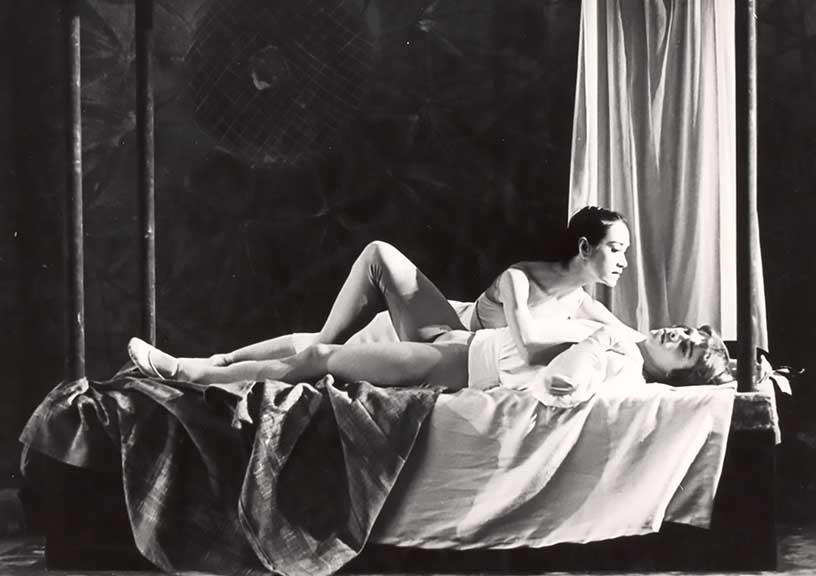
The first performance of the ballet, set to a few suites from Prokofiev’s composition, therefore took place in 1938, in the Czech city of Brno, with choreography by Ivo Vana-Psota, who also danced the role of Romeo. It was only after this that the Kirov Ballet expressed interest again, but then the collaboration with choreographer Leonid Lavrovsky did not run smoothly at all. Lavrovsky had made considerable changes to the libretto, for which he needed additional music, and it was only after some fierce arguments that Prokofiev admitted defeat. The composer also reinstated the original tragic ending to the ballet story, which he had initially composed as a happy ending.
Elusive soul
The rehearsal period was also obstructed by the Kirov dancers. They thought Prokofiev’s music was far too modern and impossible to dance to, and the things Lavrovsky asked of them were totally new to them. Inspired by the method of acting innovator Stanislavski, Lavrovsky wanted to see lifelike characters on stage. So the dancers could not hide behind their technique as they were used to, but had to act convincingly and with real feeling. In addition, Lavrovsky used mime to further emphasise the dramatic character of the dance.
All of this did lead to some critical noises after the premiere – some thought Lavrovsky’s heavy-handed version tended too much towards the kitsch – but the criticism died down when the Bolshoi Ballet triumphed internationally with Romeo and Juliet in subsequent years. The production, which was filmed in the fifties and performed in places like London and Brussels, inspired young Western choreographers of the day, like John Cranko, Kenneth MacMillan and Rudi van Dantzig. In particular, a shining example was given by the lyrical, intensely expressive ‘archetypal Juliet’ Galina Ulanova – described by Prokofiev as “the genius of Russian ballet; its elusive soul”.
‘Got used to the idea’
In 1958, Cranko presented his first Romeo and Juliet production in Milan, MacMillan presented his in 1965 in London, and in the mid-sixties artistic director of Dutch National Ballet, Sonia Gaskell, was also set on adding a new version of the ballet to the repertoire (after the Ballet van de Nederlandse Opera and the Nederlands Ballet had danced a version by Serge Lifar in 1957 and 1959 respectively). She asked Van Dantzig to create his own production, but initially he refused point blank. She then sent him off to get Lavrovsky involved, but Lavrovsky thought the stage dimensions of the Stadsschouwburg (municipal theatre) in Amsterdam were far too small. Neither was the next candidate, MacMillan, interested in staging his ballet in the Netherlands, so Gaskell ended up asking Van Dantzig again. As he said later, he had “got used to the idea by then”, although he was not exactly overjoyed. The same applied to the dancers, who initially would have preferred Lavrovsky’s version, and some of the critics were also very disparaging about the premiere of Van Dantzig’s Romeo and Juliet on 16 February 1967. They would rather have seen a production in the spirit of Van Dantzig’s earlier, contemporary creations, like his Monument for a Dead Boy, and thought it lacked his personal style. Only Yvonne Vendrig, who danced the lead role, and Toer van Schayk, who designed the wonderful, stylish sets and costumes, were immediately showered with undivided praise.
On a grand scale, true to life and with sensitivity
With each restaging of this first Dutch Romeo and Juliet, however, the reactions became more enthusiastic and the critics more complimentary. And gradually, people came to realise how much Van Dantzig had actually put his own mark on the production, despite the classical choreography. Prompted by the great social engagement that characterised him as a choreographer and as a person, he enriched Shakespeare’s tragedy by accentuating the feud between the two families, the Capulets and the Montagues. The more ‘ordinary’, more human Montecchi are in a different league to the rich, arrogant Capuleti, but the real victims of their vendetta are the poor, oppressed people of Verona. The emotions that flare up between the families and the repercussions on Romeo and Juliet are convincingly expressed by Van Dantzig in sensitive atmospheres and subtle character sketches: on a grand scale, true to life and with extraordinary sensitivity. This is why his production is not only more deeply moving than other versions of Romeo and Juliet, but is also timeless, just like Shakespeare’s story – a heart-rending ballet tragedy about two young, idealistic people, who come to grief through manipulations and intrigues from outside.
Text: Astrid van Leeuwen

The elusive power of Prokofiev’s music
What if music does not just accompany, but actually tells the story itself? In Romeo and Juliet, Sergei Prokofiev (1891-1953) shows how sound can drive the narrative. This is not background music, but rather a composition that clashes, jars and gets under your skin.
The elusive power of Prokofiev’s music
What if music does not just accompany, but actually tells the story itself? In Romeo and Juliet, Sergei Prokofiev (1891-1953) shows how sound can drive the narrative. This is not background music, but rather a composition that clashes, jars and gets under your skin.
This tension between beauty and ominousness permeates the whole score of Prokofiev’s Romeo and Juliet. Love is heard in tender melodies, and violence in angular rhythms and strident chords. The composer continually pushes the boundaries between what is pleasant and what is uncomfortable, and between what is poignant and what is disquieting. This makes the ballet composition a physical experience, rather than a narrative.
Melody as a medium for intimacy
In the more intimate scenes of the ballet, Prokofiev shows his most lyrical side. Juliet’s theme is remarkably melodious, with careful little steps that ascend and descend. The melody sounds hesitant and tender – as if Juliet is testing out her emotions, without fully understanding them yet.
Romeo’s motifs, too, remain in the background at first. But when he meets Juliet, their musical lines seem to move gradually closer together. The harmony relaxes, the tempo decelerates and the sound becomes more transparent. In the famous balcony scene, the upward phrases circle one another like two voices seeking each other out. It is as if they evoke Romeo’s desperate grasping: just out of his reach.
Expressive timbres
For Prokofiev, melody was not decorative, but fundamental. “I have never doubted the importance of melody”, he wrote. “I like melody very much, and I consider it the most important element in music.” This conviction also resonates in Romeo and Juliet: love is expressed through a sound that speaks, rather than through words.
It is not just the melody that makes the orchestra a narrator, but also the orchestration. Each instrument has a role: the oboes that whisper, the strings that sigh and the brass that lets rip. Sometimes an emotion or threat is heard in the music that is not yet visible in the movement. This musical layer adds something to what you see: an inner conflict, a repressed wish or an impending danger. It is precisely in those moments that Prokofiev shows his most refined narrative skill.
Rhythm and dissonance as violence
Whereas love sings, violence booms. In the famous ‘Dance of the Knights’ – probably the best-known part of the whole score – Prokofiev expresses the ominous mood that opens the Capuleti ball: heavily pronounced accents, angular patterns and very little breathing space. In the fights too, like the confrontation between Tybalt and Mercutio, Prokofiev turns to rhythmic disruptions and strident harmonies. The time shifts unexpectedly, the harmony turns around and the percussion cuts right through the sound picture.

Prokofiev is, however, reticent about overusing such effects. “Of course I have used dissonance”, he said. “But there has been too much dissonance. Bach used dissonance as good salt for his music. Others applied pepper until the music was nothing but pepper.” For Prokofiev, an exciting chord or jarring tone should not just be striking, but also mean something. His intention was that if listeners felt something was not quite right, then it meant that danger loomed – just as in the story itself.
Musical pitfalls and surprises
One of the most intriguing characteristics of Romeo and Juliet is the way in which Prokofiev continually misleads the listener. Where you expect a romantic climax, he breaks off the line abruptly. Where you expect a nice, rounded melody, the music suddenly changes direction. Prokofiev plays with your expectations: just as the music seems to be calming down, he puts in something that tips you off balance again. These unexpected twists are no coincidence. He deliberately avoided lapsing into repetition or well-known formulas. “I detest imitation”, he wrote, “and I detest hackneyed devices.”
This idiosyncrasy was not restricted to his music. Also in the story itself, Prokofiev sought a different twist to Shakespeare’s tragic ending. In the first version of the ballet, Romeo and Juliet survived their tragic fate – according to the composer because “living people can dance, the dying cannot.” But the longer he worked on the music, the clearer it became that the score told a different story. “What really made me change my mind”, he said later, “was a remark someone made about the ballet: ‘Strictly speaking, your music expresses no real joy at the end’.” For Prokofiev, this was reason enough to relinquish his own scenario: the music itself pointed him back to the tragedy.
A score that continues to resonate
What makes Romeo and Juliet one of Prokofiev’s most powerful works is not only the recognisability of the themes or the dramatic structure, but mainly the way in which musical contrasts clash with one another. Love and hate, hope and doom, beauty and ominousness: they do not exist side by side, but rather pull and push at the music and at the listener as well.
More than eighty years after the premiere, this tension is still palpable. Romeo and Juliet is not only a narrative in music, but also a tense confrontation. It is music that does not reassure, but wrenches, disturbs and does not let go of you.
Text: Stan Schreurs
Romeo and Juliet features one of the largest orchestral line-ups of Dutch Ballet Orchestra this season at Dutch National Ballet. See the credits above for the full line-up.

Interview with dancers Jane Lord and Salome Leverashvili
It’s evident that Juliet isn’t just any role and Romeo and Juliet isn’t just any ballet. When talking about it, Jane Lord and Salome Leverashvili regularly get choked up.
Interview with dancers Jane Lord and Salome Leverashvili
‘You run to him, with every ounce of your being’
It’s evident that Juliet isn’t just any role and Romeo and Juliet isn’t just any ballet. When talking about it, Jane Lord and Salome Leverashvili regularly get choked up. Salome has danced the role once before and now can’t wait to dive into it again “with all the emotion I possess”. Jane has danced the role umpteen times, starting with her first poignant series of performances at the Carré theatre, in 1984, and is now returning to the ballet as Juliet’s nurse. “I’ve come full circle”, she says.
That first time in Carré, says former principal dancer Jane Lord (64), was ‘extremely special’. “I was 23 and when Rudi (van Dantzig – ed.) asked me to do it I was still in the corps de ballet. He had cast me and Barry Watt, my boyfriend at the time, as the youngest couple, which felt like an enormous responsibility. The rehearsals were also exceptionally intense. We repeated each tiny detail endlessly and Rudi continually pushed us beyond our limits. He wanted more, more and still more… He pulled the emotion out of you, as it were, sometimes to the point of tears.”
For her first interpretation of Juliet, in 2019, soloist Salome Leverashvili (27) worked intensively with coach and associate artistic director Rachel Beaujean, and she is now rehearsing with Anna Tsygankova (who is also dancing the role herself again in this performance series) and ballet master Jozef Varga. “From all the stories they tell, you can gather what a huge gift Rudi was for Dutch National Ballet. And as for Juliet, they too keep saying, ‘Rudi wants it full out. If you can not go any further, go further!’ Rachel also taught me, ‘You mustn’t act; you have to really feel it.’ They wanted me to be as raw as possible, and for the emotions to really come from my innermost depths. I think that’s wonderful. Our work as dancers can sometimes be very clean and technical, so it’s great to be able to let rip as Juliet.”
Love gives courage
“Juliet is innocent, playful and a bit naughty too, in the way she often plays tricks on her nurse”, says Jane. “Initially, she also thinks it’s okay to marry Paris, until she meets Romeo at the ball and all her feelings turn towards him.” Salome says, “In the first scene, you really have to try and convey how young she is (fourteen – ed.). For example, through very quick footwork and in the way she larks about with her little brother or pinches a bunch of grapes. She’s mischievous and cheeky.” Jane adds, “It’s only in the balcony pas de deux that you see her become more grown-up, due to circumstances, and start to rebel.” Salome says, “Love gives her exceptional courage. It’s a revelation to her that her feelings for Romeo are bigger than all the social pressure from outside, however much that makes her oppose her father, Paris and all her surroundings.”
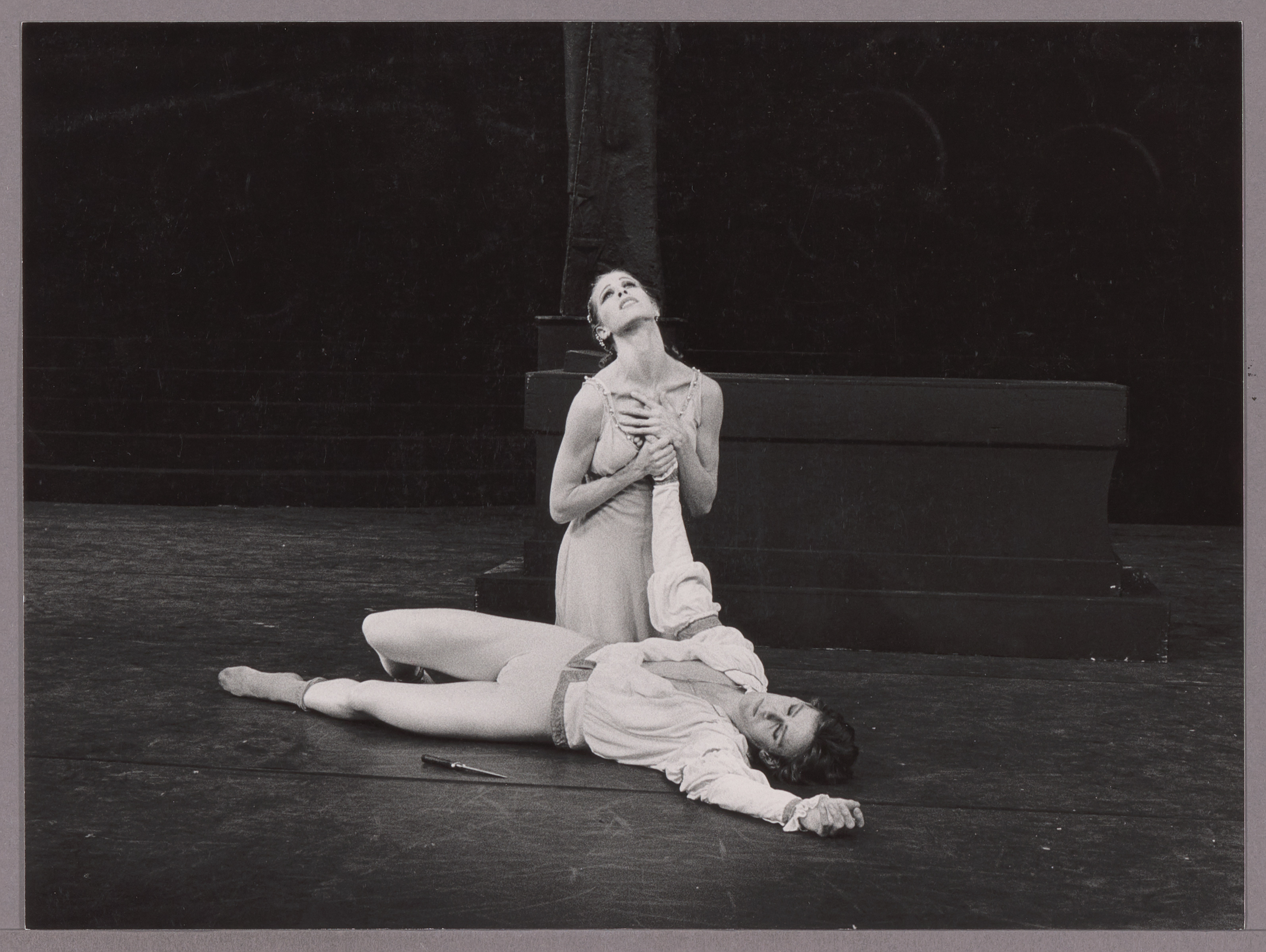
“In the classical ballet repertoire, Juliet isn’t regarded as the most technically challenging lead role. It’s not like Swan Lake or Sleeping Beauty”, says Jane. “The challenge lies in conveying the enormous development she goes through in a very short space of time, so that the audience can empathise with it and be moved by it.” “And also”, adds Salome, “that you give your own interpretation and overtone to her relationship with each individual – her nurse, her parents, Tybalt, Paris and Romeo.”
Totally lost and wrung out
They both say there are plenty of special and moving, if not heart-rending moments. Salome says, “That budding emotion when they meet one another at the ball. And afterwards, the total abandonment in the balcony pas de deux. The almost impossible decision to take the potion. And then, of course, the final scene.” Jane says, “When you wake up from your apparent death, climb down from the tomb and see or brush against Romeo’s cape, and then that music… You see him lying there, realise he’s dead and run to him, with every ounce of your being…”
Tears trickle down both their cheeks. Salome says, “In a short time, you experience a roller coaster of emotions, as if you go through a whole lifetime in a couple of days.” Jane explains, “Of course you rehearse everything, like how to pick up the potion bottle and drink the potion; every little gesture. But that’s nothing compared to what you go through on stage. At the end of that scene, too, I was always in tears.” Salome agrees, “You’re totally lost and wrung out.”
Jane says, “From an emotional point of view, you want to give your all, but you’ve still got to be able to dance the steps. So you have to continually find that balance: how far can I go in my emotions and still be capable of doing justice to the choreography?” Salome says, “At the moment after the bed scene, where she resolutely says no to her father, I always had a lump in my throat. But at the same time you know: I can’t give way to that emotion yet, I can’t break down yet.”
‘Letting go’ of Juliet
Following the many times Jane had danced the role of Juliet with Dutch National Ballet, she performed it again in 2000, at the end of her career, at an open-air theatre in Florence for three weeks. That was at the express wish of Rudi van Dantzig, with Altin Kaftira as her partner. “It was an incredible gift. Juliet was the role of my life, and with Altin I could really fly.”
Now, 25 years later, she’s returning to Van Dantzig’s ballet, but this time as the nurse. “That’s taking some getting used to. The nurse is a totally different character. In the rehearsals, I sometimes still move too nicely and elegantly, whereas the nurse clomps about in a raw, earthy and rather ungainly way.” She laughs, “I have to keep walking around with my legs wide apart. It’s a huge challenge!”
But the main thing she’s had to learn is to ‘let go’ of Juliet. “The role is still so much in my body that when I was learning the nurse in advance, in 2019, I often had the urge to run along with one of the new Juliets. And even now, I mustn’t focus on Juliet too much, or else I’d get wrapped up in her emotions.”
Salome was deeply moved when she watched the video of Jane and Barry Watt. “Jane is so beautiful as Juliet, and her emotions are so true to life. I’m absolutely inspired by that, but I don’t want to imitate her. In this role, it’s really necessary to find your own way in it, and to portray Juliet in accordance with your own feelings at the time of each performance.”
Jane says, “Returning now as the nurse is very precious to me. Dutch National Ballet is my family and I’ll forever cherish the opportunity I had to work so intensively with Rudi. The love of this ballet, and the depth of the role – it’s all coming back to me in these weeks. Actually, it’s as if I’ve never been away.”
Text: Astrid van Leeuwen

Costume fun facts
Did you know that…
Costume fun facts

Did you know that …
… a single performance of Romeo and Juliet features more than 350 costumes?
… some (parts of) the original costumes from 1967 are still being used today?
… costume parts are gradually being replaced, because some fabrics have become so old that they can no longer be worn? This time, for example, the sleeves of several dresses were renewed. Because these sleeves are highly detailed and have to be made entirely by hand, creating a new set can take up to two days.
… costumes also have to be altered because the dancers’ measurements change? Since Dutch National Ballet received its own gym from the Friends twenty years ago, the costume department has noticed that, especially the male dancers, have become more muscular. They’ve also observed that people’s heads are getting bigger, which means new headdresses are needed.
… scent is one of the biggest challenges in preserving original costume elements? It’s a constant battle against generations of athletic sweat. Fortunately, the atelier now has an ozone cabinet, which kills bacteria and removes unpleasant odours in a sustainable way.
… the blue doublet (sleeveless vest) that Romeo wears in Act II (in the photo above, on the right) was originally gold? Designer Toer van Schayk adjusted the design in 2019 – 52 years after the premiere – to make the costume stand out more.
Soloists
Character dancers
Always know what’s on
Be the first to be informed about our productions and receive exclusive content in your inbox.
Success!
From now on you will receive our performance updates.
Something went wrong
Something went wrong, please try again later. Apologies for the inconvenience.
